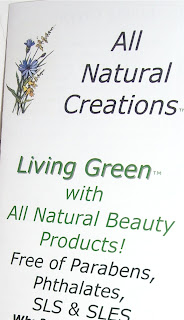Pumpkin seeds are one of nature's almost perfect foods. They are a natural source of beneficial constituents such as carbohydrates, amino acids and unsaturated fatty acids. They contain most of the B vitamins, along with C, D, E, and K. They also have the minerals calcium, potassium, niacin, and phosphorous. Pumpkin seeds have mainly been used to treat prostate and bladder problems, but they have also been known to help with depression and learning disabilities.
Pumpkins are very high in potassium, and have good amounts of beta carotene and vitamin C. They are also a good source of calcium and fibre, and as well as other vitamins and minerals. Pumpkin seed oil and pumpkin seeds are a good source of zinc and unsaturated fatty acids (good fats).
Fresh and cooked pumpkin is chock full of vitamin C, vitamin E, vitamin A, potassium, alpha-carotene, zinc, beta carotene, and lutein. It’s easy to add pumpkin to your favorite baked goods and dishes during the colder months, and the vitamins and minerals can help keep your health in tip-top shape during the winter. Pumpkin is rich, satisfying, and can be used in a number of recipes as a meal or in dessert; if you cook it in a healthy way, it might also give you an excuse to indulge in an extra slice of pumpkin pie this year! Still, eating pumpkin isn’t the only way to enjoy its natural benefits.
Nutritional Value of Pumpkin Seeds
Snacking on ¼-1/2 cup of pumpkin seeds can deliver the nutrients mentioned at the outset of this article, as well as calcium, vitamin K, protein and important omega-3 fatty acids. Pumpkin seeds can be eaten raw, baked, roasted or toasted.
Because pumpkin seeds and good health share such an important relationship, plan to make pumpkin seeds a regular part of your diet. Keep a supply on hand and store the seeds in a tightly sealed container in your fridge.
Pumpkin seeds and onions mixed together with a little soy milk make a great remedy for parasitic worms in the digestive tract. To make this remedy, liquefy three tablespoons of pumpkin seeds that have been soaked three hours, one-half of a small onion, one-half cup soy milk, and one teaspoon honey. Take this amount three times daily, three days in a row.
Pumpkin seeds, also known as pepitas, are flat, dark green seeds. Some are encased in a yellow-white husk, although some varieties of pumpkins produce seeds without shells. Like cantaloupe, cucumber, and squash, pumpkins and pumpkin seeds belong to the gourd or Cucurbitaceae family.
Nutty and salty with a crisp-chewy texture, pumpkin seeds make a nutritious and flavorful snack. Boiled, baked, or even raw, pumpkin seeds are packed full of vitamins, minerals and amino acids. Just one serving (about 1/4 cup) gives you almost half the recommended daily amounts of manganese, magnesium, phosphorus, iron, copper, vitamin K, and zinc. Pumpkin seeds are a good source of protein and monounsaturated fats.
Pumpkin seed oil has an excellent ratio of those Omega 3 and 6 fatty acids. Often flax and hemp oils are rated as the best with pumpkin seed also offering a great source of these valuable plant fats important for cellular function and many of the systems in the body. Basically keeps your coat glossy, skin clear and a puts a spring in your step.
Article Source: http://www.articlesbase.com/health-articles/health-benefits-of-pumpkin-seeds-get-rid-of-health-problems-395992.html
About the Author:
Read about Home Remedies, Natural Home Remedy . Also read about Body Building Tips Guide Body Building Supplements and Hair Loss Treatment










